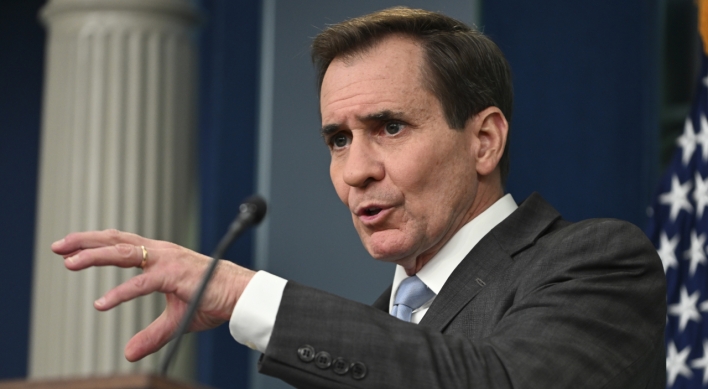North Korea fired what appears to be a medium-range ballistic missile Musudan on Friday morning, but it was confirmed to have failed by the South Korean military.
According to the Joint Chiefs of Staff, the botched launch took place around 5:30 a.m. toward the East Sea.
“A single missile is presumed to have been launched. We are keeping a close eye on the situation in case of an additional launch,” a JCS official said. “I understand South Korea and the U.S. jointly detected (the launch).”
The missile is presumed to have exploded in mid-air during the initial stages of the launch before reaching its apex.
The possibility of Pyongyang conducting another mid-range missile launch reportedly remains high.
The JCS did not elaborate on the type of missile it was, what hindered its successful launch, how long the missile had flown or how the military detected the launch. It claimed that revealing the details would expose crucial information about the strategic assets of the South Korean military.
In previous North Korean missile launches, the JCS promptly informed the media of the missile type along with the time and location of the launch.
The Pentagon said in a statement that the U.S. has detected and tracked what it assessed as a failed North Korean missile launch that did not pose a threat to North America.

The missile in question is presumed to be the North’s Musudan -- or Rodong-B -- intermediate-range ballistic missile. The weapon is thought to be based on the Soviet R-27 submarine launched ballistic missile, and is estimated to have a range of up to 4,000 kilometers.
If confirmed, it would put all of South Korea, Japan and even the U.S. military base in Guam within its range.
It was reported Thursday that North Korea had deployed its mid-range missiles near the eastern port city of Wonsan for a possible launch Friday, marking the birthday of Kim Il-sung, the state founder and incumbent leader Kim Jong-un’s grandfather.
A successful operation Friday would have marked the first time Musudan -- which had been deployed for actual use since 2007 -- had been actually launched.
Growing inter-Korea tensions had been marked by the communist state’s nuclear testing and long-range rocket launch in January and February, followed by the U.N.-led sanctions against it in March.
The North’s Korea Central News Agency said Friday that the Pyongyang leadership has promoted Ri Myong-su to the rank of vice marshal, a rank higher than four-star general. Ri is perceived to be a hard-liner, leading to speculation that Pyongyang may push ahead with military provocations against the South ahead of its ruling Workers’ Party convention in May.
Seoul’s Defense Ministry has said that the North could conduct a nuclear test “whenever the leadership decides to.”
Last week, Pyongyang unveiled an engine test for the North’s new intercontinental ballistic missiles, based on which U.S.-based aerospace engineer John Schilling presumed that it could deploy the ICBM as early as 2020.
U.S. northern commander Adm. William Gortney said Thursday that he assesses the North is able to “miniaturize a nuclear weapon and range the homeland with that warhead.” He added that it was a “prudent course of action” to make such an assumption, and that the intelligence community’s assessment sees such probability as low.
By Yoon Min-sik (minsikyoon@heraldcorp.com)




![[Music in drama] Rekindle a love that slipped through your fingers](http://res.heraldm.com/phpwas/restmb_idxmake.php?idx=644&simg=/content/image/2024/05/01/20240501050484_0.jpg&u=20240501151646)




![[New faces of Assembly] Architect behind ‘audacious initiative’ believes in denuclearized North Korea](http://res.heraldm.com/phpwas/restmb_idxmake.php?idx=644&simg=/content/image/2024/05/01/20240501050627_0.jpg&u=20240502093000)









![[Today’s K-pop] Stray Kids go gold in US with ‘Maniac’](http://res.heraldm.com/phpwas/restmb_idxmake.php?idx=642&simg=/content/image/2024/05/02/20240502050771_0.jpg&u=)